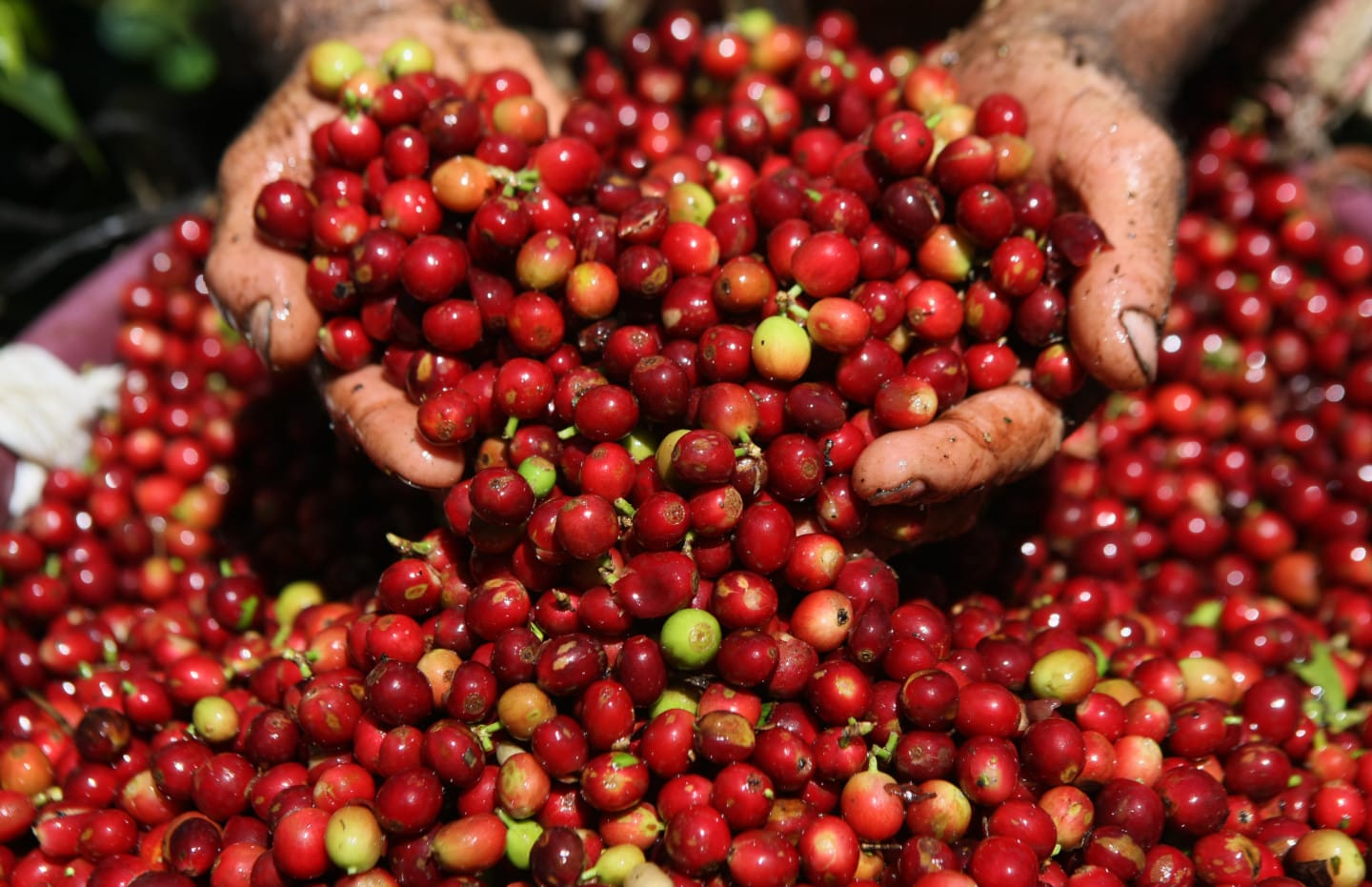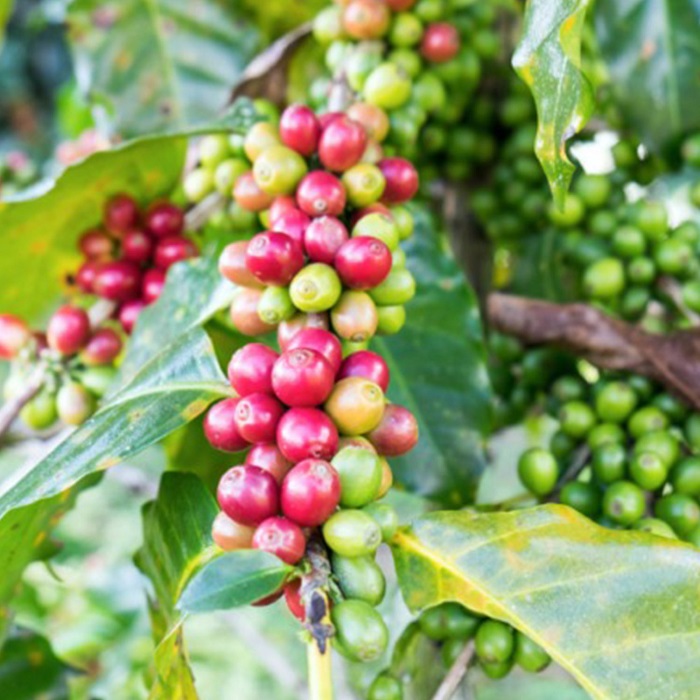SOE Single Origin Espresso – The Go-To Choice for Espresso Lovers
SOE Single Origin Espresso – The Go-To Choice for Espresso Lovers
Blog Article
Discovering the Rich Tastes of Coffee Beans: a Deep Dive Into Coffee and Blended Coffee Beans
When you discover the abundant tastes of coffee beans, you uncover a complex globe where each selection brings its own character to your cup. Comprehending the beginnings, processing approaches, and roasting techniques can transform your coffee experience. As you browse through the art of coffee and the creativity behind combined coffees, you'll begin to value the subtleties that make each sip special. What you'll discover next could transform the way you enjoy your early morning mixture.
The Origins of Coffee Beans: Checking Out Terroir and Flavor Profiles
When you take a sip of coffee, you're not simply delighting in a drink; you're experiencing an abundant tapestry of flavors formed by the beans' beginnings. Each region creates distinct taste profiles influenced by altitude, climate, and soil. Beans from Ethiopia usually burst with brilliant, fruity notes, while those from Colombia tend to offer a balanced, nutty sweetness.As you discover various origins, you'll observe just how terroir-- the ecological variables impacting a plant-- plays an essential role. The exact same coffee range can taste substantially different relying on where it's grown.When you consider these factors, you begin to appreciate the complexity behind your mug. Each sip tells a story of the land and the farmers that nurtured the beans. So, next time you indulge, assume about the trip your coffee took before it reached your hands, and savor those intricate tastes that show its beginning.
Comprehending Coffee: The Art and Scientific Research Behind the Brew
When you consider espresso, it's not practically the solid taste; it's likewise about the methods that bring it to life. Comprehending exactly how various preparation techniques effect taste can change your brewing experience. Allow's explore the intricacies of espresso preparation and discover the one-of-a-kind taste accounts that make each mug unique.
Coffee Preparation Strategies
Espresso preparation is both a science and an art, integrating accurate strategies with a deep understanding of coffee. To start, you'll desire to select high-grade, fresh roasted beans and grind them finely for suitable removal. The work size is vital; as well coarse, and your espresso will be weak, as well great, and it'll be bitter.Next, tamp the premises equally in the portafilter to assure uniform removal. When you lock it into the maker, go for a developing temperature in between 190 ° F and 205 ° F.As you draw the shot, expect the ideal extraction time-- around 25-30 secs. The outcome must be an abundant, creamy coffee with a lovely layer of crema on the top - SOE. With method, you'll master these methods
Taste Accounts Clarified
The globe of espresso provides an abundant tapestry of taste profiles that can boost your coffee experience. When you take that first sip, you'll observe a balance of acidity, sweetness, and bitterness. Each espresso bean carries one-of-a-kind notes, from floral and fruity to nutty and chocolaty. Light roasts often display bright level of acidity and vivid flavors, while dark roasts existing much deeper, bolder tones.Understanding these profiles aids you select the right espresso for your taste buds. Try out different blends can expose unusual combinations. As an example, a well-crafted blend may harmonize the brilliant notes of an Ethiopian bean with the rich, chocolatey undertones of a Brazilian bean. Accept the journey of finding coffee's diverse flavors, and you'll change your coffee ritual into an interesting adventure.
Processing Techniques: Just How They Impact Taste and Scent
While it may seem that the origin of coffee beans is one of the most substantial consider determining their taste and aroma, the processing methods utilized post-harvest play an equally important function. You'll find that these approaches can considerably modify the last preference profile of your cup.For circumstances, the washed procedure removes the fruit from the beans prior to fermentation, often causing a cleaner, brighter flavor. On the other hand, the natural procedure leaves the fruit intact during drying out, resulting in a sweeter, fruitier profile.Other approaches, like honey handling, strike an equilibrium, enabling some fruit mucilage to remain, supplying a special complexity.Each processing technique interacts with the beans' fundamental qualities, enhancing or muting particular tastes and scents. So, when you sip that coffee or blended coffee, bear in mind that the trip from cherry to mug is influenced resource not just by beginning yet also by how those beans were processed.

Toasting Techniques: Opening the Complete Possible of Coffee Beans
Toasting techniques are vital for disclosing the full possibility of coffee beans, as they change raw, green beans into the fragrant, tasty coffee you take pleasure in. The option of toasting technique-- light, tool, or dark-- considerably affects flavor profiles. Light roasts maintain the beans' natural level of acidity and fruity notes, while tool roasts equilibrium sweet taste and richness. Dark roasts, on the various other hand, emphasize vibrant, great smoky flavors.You can explore toasting times and temperatures to find your ideal brew. A slower roast at reduced temperatures permits for complex flavors to establish, while a quicker roast can heighten bitterness. Take note of the fractures during toasting; the first split shows a light roast, while the 2nd split signals a dark roast - Single Origin Espresso. By understanding these techniques, you'll reveal a globe of taste, boosting your anchor coffee experience to brand-new elevations. Appreciate every sip, understanding the care that went into your cup!
The Magic of Blended Coffee: Producing Unique Flavor Experiences
Producing an one-of-a-kind flavor experience with mixed coffee can change your morning ritual right into an exploration of preference. By integrating various beans from various areas, you can expose a harmony of flavors that elevate your cup to brand-new elevations. Each mix deals a distinctive account, stabilizing sweetness, level of acidity, and body to create something genuinely special.When you select a blend, you're not just picking a coffee; you're selecting a journey throughout varied landscapes and cultures. Try out various combinations allows you to find your individual faves, whether you appreciate fruity notes or rich, chocolatey undertones.Blended coffee additionally offers you the adaptability to change the mixture to suit your state of mind. You may long for a light-bodied mix eventually and a strong, dark roast the next. Accept the magic of mixing and let each mug surprise your taste buds, making every sip a wonderful experience.
Sampling Notes: Acknowledging the Nuances in Your Mug
As you sip your coffee, you might notice a spectrum of tastes dancing on your taste buds, each exposing the details of the beans. You might taste the bright level of acidity evocative citrus or the deep, abundant notes akin to dark chocolate. The sweetness could evoke honey or sugar, balancing the overall profile beautifully.Pay interest to the body of the coffee-- does it feel light and airy, or is it full and creamy? The surface, also, offers hints; a sticking around aftertaste might mean nuttiness or floral undertones.Don' t forget to check out the unique characteristics of various origins, as each area presents distinctive tastes. Ethiopian coffees typically present fruity notes, while Colombian beans might display a more spherical sweetness. By recognizing these subtleties, you'll deepen your appreciation for every cup, raising your coffee experience to new elevations.

Developing Techniques: Maximizing Flavor Extraction for each Bean
When you check out the various brewing methods, you'll find that each technique can considerably influence the taste account of your coffee. From French press to pour-over, each approach extracts different substances, boosting or silencing certain notes. Utilizing a French press permits oils to continue to be in the mixture, creating a richer preference, while pour-over emphasizes clarity and brightness.Temperature and grind size also play necessary roles. A coarser grind functions best for chilly mixtures, while a fine work is suitable for coffee. Exploring you can find out more with water temperature-- between 195 ° F and 205 ° F-- can expose surprise flavors, too.Don' t ignore soaking time; a fast extraction can bring about sour notes, while over-extraction may yield bitterness. By changing these variables, you can maximize taste extraction and truly raise your coffee experience. Enjoy the journey of discovering what method finest matches your palate!
Often Asked Concerns
What Is the Suitable Water Temperature for Developing Coffee?
The perfect water temperature for brewing coffee's between 195 ° F and 205 ° F. If you use water that's as well hot, you'll over-extract flavors; too cool, and you won't extract enough. Purpose for that sweet area for the very best mixture!
Just How Does Work Dimension Affect Coffee Taste?
Grind size significantly impacts coffee flavor. Better grinds remove more oils and flavors, leading to a bolder taste, while coarser grinds yield a lighter flavor. Changing work size aids you achieve your wanted coffee profile.
Exist Wellness Conveniences Associated With Drinking Coffee?
Yes, consuming alcohol coffee can offer health and wellness advantages. It may enhance cognitive feature, boost metabolism, and reduced the danger of certain conditions. Just keep in mind to appreciate it in small amounts to profit without negative effects.

What Is the Difference In Between Arabica and Robusta Beans?
Arabica beans are smoother and sweeter, often including fruity flavors, while robusta beans are more powerful with a bitter preference and greater caffeine material. You'll notice these distinctions in aroma and developing experience.
Just How Can I Store Coffee Beans for Freshness?
To keep coffee beans for freshness, maintain them in a closed container, far from light, heat, and moisture. If you just grind what you need right before brewing, you'll keep their flavor longer. When you check out the abundant tastes of coffee beans, you reveal a complicated world where each selection brings its very own personality to your cup. When you take a sip of coffee, you're not simply taking pleasure in a drink; you're experiencing an abundant tapestry of flavors formed by the beans' origins. While it could appear that the origin of coffee beans is the most significant variable in establishing their flavor and aroma, the handling approaches utilized post-harvest play an equally important duty. Roasting strategies are crucial for revealing the full possibility of coffee beans, as they transform raw, environment-friendly beans into the aromatic, tasty coffee you enjoy. As you sip your coffee, you may observe a range of tastes dancing on your taste buds, each disclosing the ins and outs of the beans.
Report this page